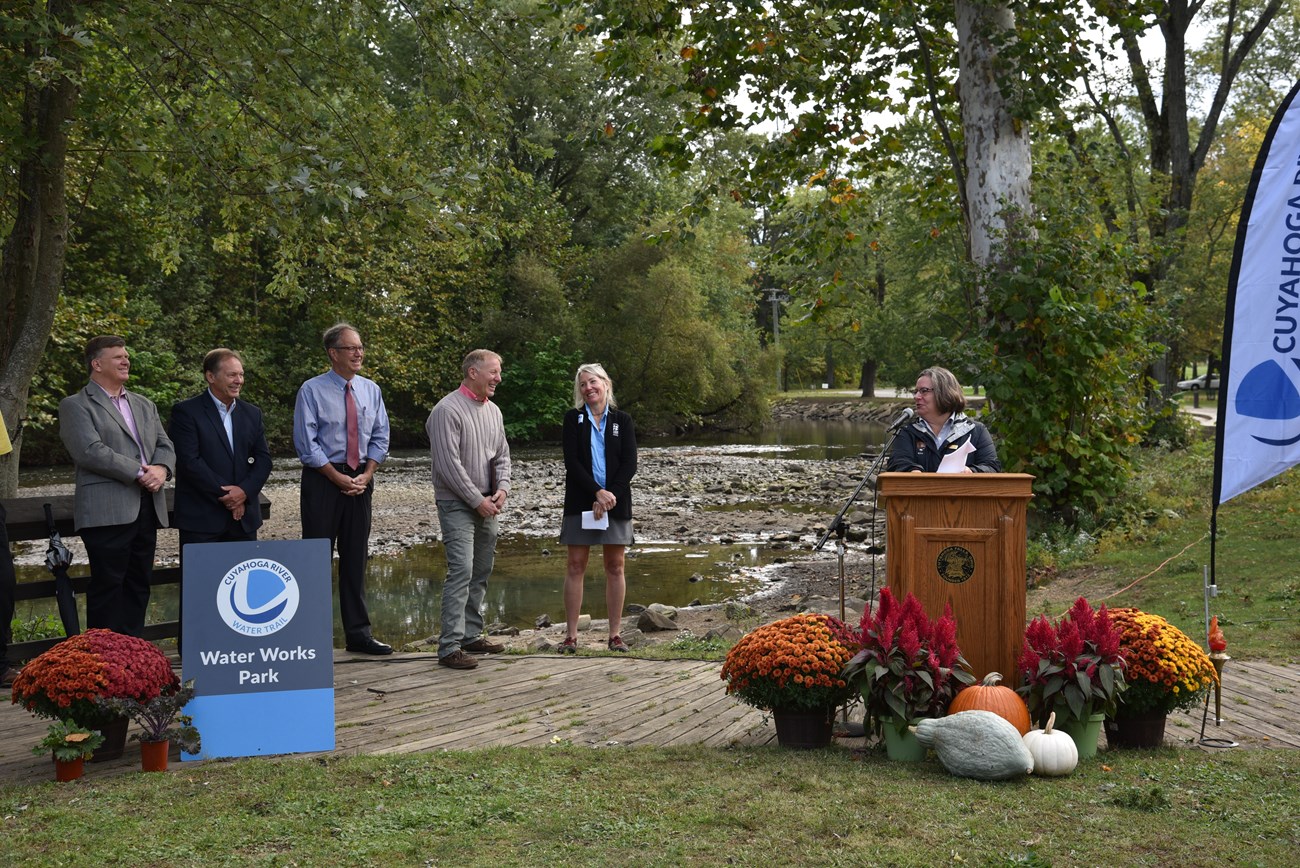Last updated: March 2, 2022
Article
The Cuyahoga River: Once on Fire, Now A Recreation Destination

by Elijah Olomoniyi
On June 22, 1969 the Cuyahoga River in Cleveland, Ohio was set ablaze as sparks from a passing train ignited oil-covered debris in the river. Although it was not the first fire on the river, it set itself apart by gaining the nation's attention and 50 years later, the Cuyahoga made a new name for itself as Ohio's 13th designated water trail, marking just how far restoration of the river has come.
The river has not always been safe for recreation. Today, with 50 years of grassroots clean-up, federal enforcement, changes to municipal policies, nonprofit leadership and community advocacy, the river has become a prized natural resource, as well as a recreational and economic asset to the communities along the river corridor.
The ongoing cleanup process has been long and arduous. Locals involved have modeled the hard work necessary for successful river restoration, making the Cuyahoga River a community treasure.

Recognizing that community attitudes and values of the Cuyahoga River were changing, the National Park Service – Rivers, Trails and Conservation Assistance program worked to support the river restoration goals of local organizations. Andrea Irland, National Park Service project specialist, collaborated with river management partners and other stakeholder organizations in planning and implementing strategies to develop the Cuyahoga River Water Trail.
Supporting the vision to develop a water trail, various local nonprofit organizations and community partners worked to make the 90-mile river as accessible as possible – the river was mapped, rapids were classified, and more access points were identified and established.
To ensure that safety and awareness were not overlooked, Irland helped the group evolve appropriate signage and create a website, as well as collaborate with the Ohio Department of Natural Resources to make river safety information available for public use.
Meanwhile, Cuyahoga Valley National Park, which manages access points along 22 miles of the river, established new river restoration goals, from raising public awareness about river accessibility to removing the river from the Environmental Protection Agency's "Areas of Concern" list and seeking designation as a wild and scenic river, the nation’s strongest form of protection for free-flowing waterways.
According to Lisa Petit, the Deputy Superintendent of Cuyahoga Valley National Park, the park is now working to be a sustainable river park with an unimpaired waterway flowing through it.
“Our vision is that in five years, the Cuyahoga River watershed and surrounding communities will be symbols of international recovery,” Petit said.

A Time to Celebrate
Community and river partners gathered to celebrate their work during Cuyahoga50, a collaboration throughout 2019 with more than 100 community events, in addition to a 5-day anniversary event in June.
On Oct. 4, 2019 the Cuyahoga River was officially designated as Ohio's 13th water trail. Community members and National Park Service staff celebrated this achievement with a post-designation paddle with state officials, project partners and other stakeholders.
Though the team missed the June anniversary, having the trail designated a few months later turned out to be a “blessing in disguise.”
“As much as we were a little bit disappointed in ourselves that we didn’t make the June date, in some ways we were kind of glad because the June events were so big and got so much national attention that the designation of the water trail would have been diluted in all the other activities,” said Irland. “October gave us the chance to stand on our own.”

An Economic Renaissance
With the river attracting more nature lovers and recreationists than before, investors saw opportunities to develop businesses in communities along the Cuyahoga River. From breweries and restaurants to outfitters, river communities are seeing an economic renaissance that would not have been imaginable 20 years ago.
“I’ve lived in northeastern Ohio all my life and I see a huge difference,” Irland said. “There is economic development happening not only in downtown Cleveland, but all along the river. People want to go to the river now as opposed to before, when it was a scary place.”
Partners continue their work with local communities to ensure that people are recreating responsibly along the Cuyahoga River. Through classes, participants who may have never had the opportunity to get on the river can learn how to safely enjoy their brand-new water trail.
The Cuyahoga River story is one of hard work, resilience and restoration. It has demonstrated how community-led collaboration can restore America’s rivers and add significant value to one’s quality of life and community.
Learn more about the Cuyahoga River Water Trail.
